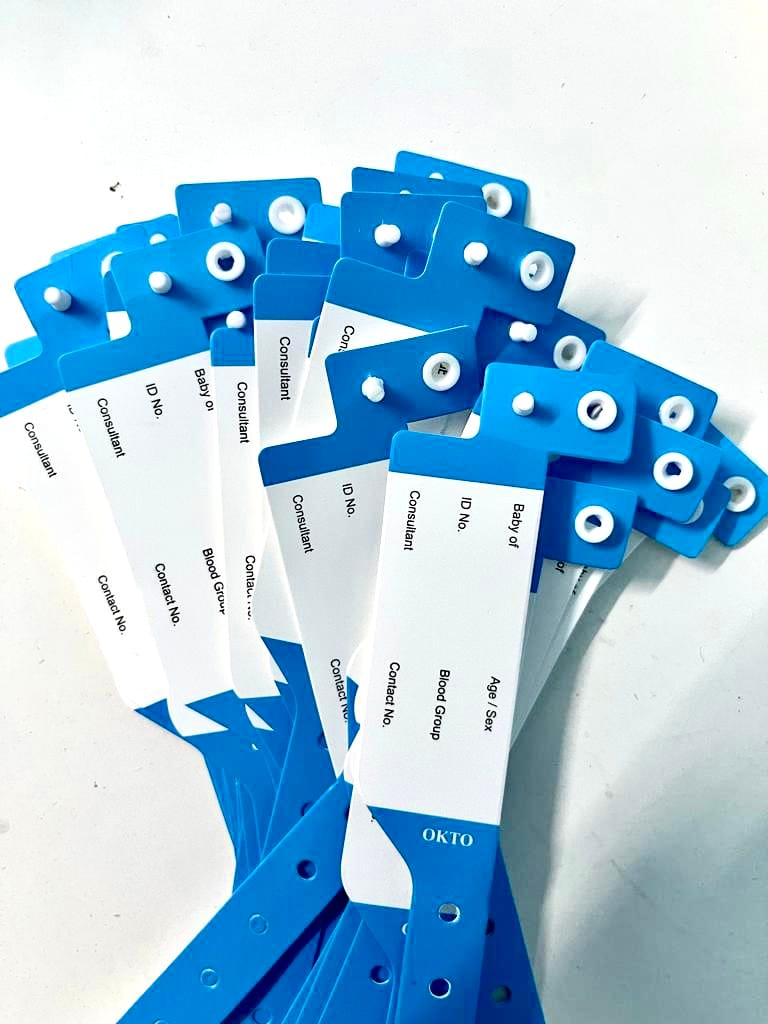Enhancing Safety And Security: The Significance of Individual Identification Bands in Health Care
In the realm of healthcare, the efficacy of person identification bands can not be overstated, as they offer as a basic guard against misidentification and subsequent mistakes. As we explore the multifaceted duty of these bands, it becomes apparent that their significance extends beyond plain identification, increasing concerns concerning best practices and future innovations in patient safety.
Summary of Individual Identification Bands
Client recognition bands play a crucial function in guaranteeing the safety and precision of patient treatment in health care settings. These bands, usually used on the wrist or ankle, serve as an essential tool for confirming person identification, thus minimizing the risk of errors in treatment, medication administration, and other medical care treatments. Made from resilient materials, person recognition bands usually include essential details such as the client's name, date of birth, medical record number, and barcodes or QR codes for scanning.
The application of client identification bands is important in numerous health care settings, consisting of hospitals, outpatient facilities, and lasting care establishments. They contribute to a methodical approach in individual monitoring, making it possible for healthcare professionals to rapidly and accurately identify clients, especially in high-pressure circumstances where speedy decision-making is important.
Furthermore, the use of these bands is aligned with governing standards aimed at improving person safety and security - Patient Identification Band. By guaranteeing that each patient's info is easily easily accessible and easily proven, doctor can keep a high requirement of treatment, minimize the incidence of negative occasions, and cultivate a society of security within health care institutions
Advantages of Accurate Recognition
Precise identification is basic to improving individual safety and security and care quality in healthcare setups. It offers as the first line of protection versus mistakes that can lead to adverse person end results. By making sure that each patient is appropriately recognized with reputable means, such as patient identification bands, doctor can dramatically lessen the risk of misidentification, which can bring about improper treatments, drug errors, and even medical mix-ups.
Furthermore, exact individual identification promotes efficient interaction among healthcare groups. When all team member can continually identify individuals, they can share crucial info more efficiently, bring about better coordination of care. This is particularly crucial in emergency situation circumstances where prompt interventions are crucial.
Furthermore, exact identification sustains compliance with regulative criteria, thereby reducing the danger of lawful repercussions for health care centers. It cultivates trust fund between clients and medical care service providers, as clients feel extra protected understanding that their identities are being protected.

Common Obstacles Dealt With
Ensuring efficient patient identification in medical care settings provides an array of challenges that can jeopardize security and care top quality. Clients might get here in a state of confusion or distress, making precise recognition difficult.
One more difficulty is the dependence on human elements in recognition treatments. Healthcare discover here professionals may accidentally misinterpret or ignore recognition methods, particularly in high-stress environments such as emergency situation departments. This can result in mistakes, including the management of wrong treatments or medications.
Technical issues also present obstacles. Digital health record (EHR) systems are designed to streamline patient identification, system failures or individual errors can disrupt the process. Additionally, the physical style of individual ID bands can cause readability issues, particularly in situations where bands are damaged or obscured.
Last but not least, irregular training among team pertaining to identification protocols can result in voids in expertise and method. Dealing with these challenges is essential for enhancing person security and guaranteeing that identification bands offer their designated purpose properly.
Finest Practices for Implementation
To effectively apply person identification bands in medical care setups, organizations have to embrace a diverse method that prioritizes training, modern technology, and standardization combination. Standardization involves developing clear procedures for the layout, application, and usage of identification bands throughout all departments. This ensures uniformity and minimizes the danger of mistakes linked to variances in band kinds or labeling techniques.


Training is necessary for all health care team to ensure they understand the value of precise client identification, just how to correctly apply and review identification bands, and the treatments to comply with in situation of discrepancies. Normal workshops and correspondence course can strengthen this understanding and promote a society of security.
Technology integration plays a crucial function in boosting the efficiency of person identification bands. Making use of barcode scanning or RFID modern technology can enhance the identification procedure, permitting real-time confirmation of individual identities. Furthermore, digital visit this web-site health and wellness document systems should be set up to include signals for inequalities in between the identification band and patient information.
Future Trends in Patient Security
As medical care remains to develop, the focus on client safety and security is most likely to heighten, driven by innovations in modern technology and a better understanding of systemic risks. Emerging patterns show a change towards more incorporated systems that leverage information analytics, synthetic knowledge, and equipment learning to improve individual recognition processes. These innovations can aid determine prospective safety and security problems before they escalate, thus minimizing mistakes related to misidentification.
Moreover, the application of blockchain modern technology might revolutionize exactly how patient information is firmly shared amongst medical care providers, ensuring that identification bands are up-to-date and consistently accurate. This will certainly not just improve individual security however likewise assist in smooth interaction throughout multidisciplinary groups.

In addition, the expanding focus on personalized medication is anticipated to influence person security methods. By integrating genetic and demographic info into recognition systems, health care experts can customize therapies extra efficiently, decreasing the risks of Full Article unfavorable reactions because of misidentification.
Final Thought
In conclusion, client identification bands serve as a crucial element in enhancing safety and security within health care environments. Inevitably, the continued emphasis on durable identification methods will certainly contribute to better client outcomes and total safety in medical care settings.
In the world of health care, the efficacy of person identification bands can not be overemphasized, as they offer as an essential protect against misidentification and succeeding mistakes.Patient recognition bands play an important role in making sure the safety and precision of patient treatment in healthcare settings. Made from durable products, individual identification bands often consist of essential info such as the person's name, date of birth, clinical document number, and barcodes or QR codes for scanning.
By guaranteeing that each patient is appropriately determined through reliable methods, such as individual recognition bands, medical care companies can dramatically minimize the danger of misidentification, which can lead to unacceptable treatments, medication errors, and also medical mix-ups.
In conclusion, individual identification bands offer as a vital component in improving safety and security within healthcare environments. Patient Identification Band.